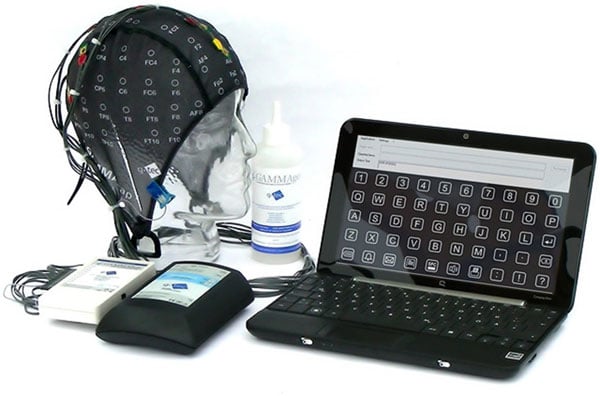The Intendix Brain-Computer Interface works on a thought-to-computer system. The user wears the EEG cap and can control the attached PC using their brain waves. The EEG headgear allows you to write texts, let the computer speak the written text, print out or copy the text into an e-mail, or send commands to external devices via brain control.

Applications and Benefits
The system was originally designed to assist patients with locked-in syndrome or other disabilities and can be used to trigger alarms if needed. Locked-in syndrome is a condition where a patient is fully conscious but cannot move or communicate verbally due to complete paralysis of nearly all voluntary muscles in the body except for the eyes. For these patients, the Intendix Brain-Computer Interface can be a game-changer, providing them with a means to communicate and interact with their environment.
Beyond medical applications, the technology has potential uses in various fields. For instance, it can be used in gaming to create more immersive experiences where players can control game elements using their thoughts. It could also be employed in smart home systems, allowing users to control lights, thermostats, and other devices without lifting a finger. The possibilities are vast and could revolutionize how we interact with technology.
Ease of Use and Future Prospects
The system is very easy to learn, say the manufacturers, and within only 10-15 minutes, you can be controlling your PC. This ease of use is crucial for widespread adoption, especially among those who may not be tech-savvy. The intuitive design ensures that users can quickly get up to speed and start benefiting from the technology almost immediately.
Unfortunately, there’s no launch date as yet, but the system will be available to buy for around $12,250 shortly. While the price may seem steep, it’s important to consider the life-changing benefits it offers, particularly for those with severe disabilities. As the technology matures and becomes more widespread, we can expect the costs to come down, making it accessible to a broader audience.
Moreover, ongoing research and development in the field of brain-computer interfaces promise even more advanced features in the future. For example, improvements in EEG technology could lead to more accurate and faster brainwave detection, enhancing the system’s responsiveness. Additionally, integration with artificial intelligence could enable more complex commands and interactions, further expanding the system’s capabilities.
The Intendix Brain-Computer Interface represents a significant leap forward in assistive technology. Its ability to translate thoughts into actions opens up new possibilities for communication and control, particularly for those with severe disabilities. As the technology continues to evolve, we can look forward to even more innovative applications that will transform how we interact with the digital world.
Akihabaranews
Latest Geeky Gadgets Deals
Disclosure: Some of our articles include affiliate links. If you buy something through one of these links, Geeky Gadgets may earn an affiliate commission. Learn about our Disclosure Policy.